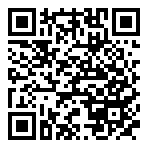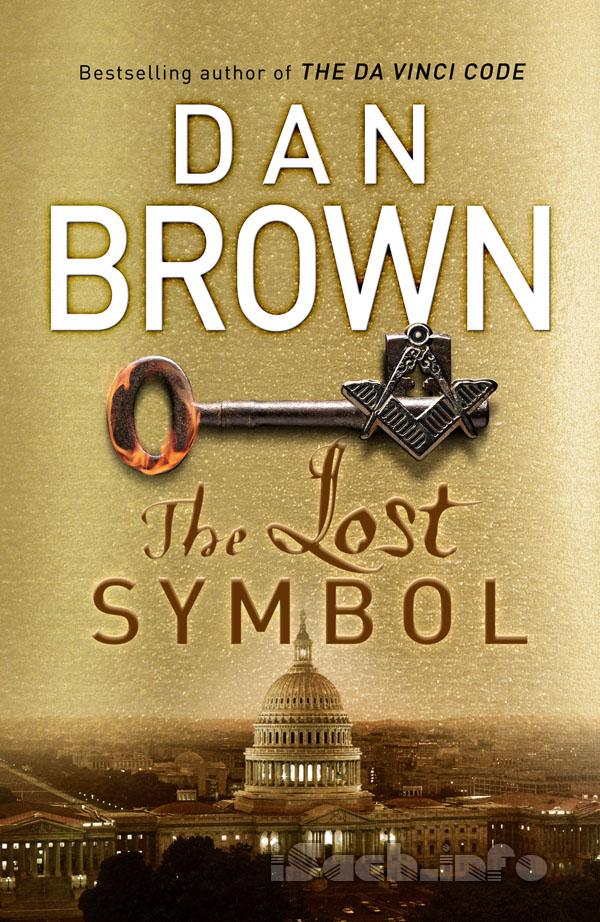Chapter 49
R
obert Langdon hung up his cell phone, feeling increasingly worried. Katherine’s not answering her cell? Katherine had promised to call him as soon as she was safely out of the lab and on her way to meet him here, but she had never done so.Bellamy sat beside Langdon at the reading-room desk. He, too, had just made a call, his to an individual he claimed could offer them sanctuary—a safe place to hide. Unfortunately, this person was not answering either, and so Bellamy had left an urgent message, telling him to call Langdon’s cell phone right away.
“I’ll keep trying,” he said to Langdon, “but for the moment, we’re on our own. And we need to discuss a plan for this pyramid.”
The pyramid. For Langdon, the spectacular backdrop of the reading room had all but disappeared, his world constricting now to include only what was directly in front of him—a stone pyramid, a sealed package containing a capstone, and an elegant African American man who had materialized out of the darkness and rescued him from the certainty of a CIA interrogation.
Langdon had expected a modicum of sanity from the Architect of the Capitol, but now it seemed Warren Bellamy was no more rational than the madman claiming Peter was in purgatory. Bellamy was insisting this stone pyramid was, in fact, the Masonic Pyramid of legend. An ancient map? That guides us to powerful wisdom?
“Mr. Bellamy,” Langdon said politely, “this idea that there exists some kind of ancient knowledge that can imbue men with great power . . . I simply can’t take it seriously.”
Bellamy’s eyes looked both disappointed and earnest, making Langdon’s skepticism all the more awkward. “Yes, Professor, I had imagined you might feel this way, but I suppose I should not be surprised. You are an outsider looking in. There exist certain Masonic realities that you will perceive as myth because you are not properly initiated and prepared to understand them.”
Now Langdon felt patronized. I wasn’t a member of Odysseus’s crew, but I’m certain the Cyclops is a myth. “Mr. Bellamy, even if the legend is true . . . this pyramid cannot possibly be the Masonic Pyramid.”
“No?” Bellamy ran a finger across the Masonic cipher on the stone. “It looks to me like it fits the description perfectly. A stone pyramid with a shining metal capstone, which, according to Sato’s X-ray, is exactly what Peter entrusted to you.” Bellamy picked up the little cube-shaped package, weighing it in his hand.
“This stone pyramid is less than a foot tall,” Langdon countered. “Every version of the story I’ve ever heard describes the Masonic Pyramid as enormous.”
Bellamy had clearly anticipated this point. “As you know, the legend speaks of a pyramid rising so high that God Himself can reach out and touch it.”
“Exactly.”
“I can see your dilemma, Professor. However, both the Ancient Mysteries and Masonic philosophy celebrate the potentiality of God within each of us. Symbolically speaking, one could claim that anything within reach of an enlightened man . . . is within reach of God.”
Langdon felt unswayed by the wordplay.
“Even the Bible concurs,” Bellamy said. “If we accept, as Genesis tells us, that ‘God created man in his own image,’ then we also must accept what this implies—that mankind was not created inferior to God. In Luke 17:20 we are told, ‘The kingdom of God is within you.’ ”
“I’m sorry, but I don’t know any Christians who consider themselves God’s equal.”
“Of course not,” Bellamy said, his tone hardening. “Because most Christians want it both ways. They want to be able to proudly declare they are believers in the Bible and yet simply ignore those parts they find too difficult or too inconvenient to believe.”
Langdon made no response.
“Anyhow,” Bellamy said, “the Masonic Pyramid’s age-old description as being tall enough to be touched by God . . . this has long led to misinterpretations about its size. Conveniently, it keeps academics like yourself insisting the pyramid is a legend, and nobody searches for it.”
Langdon looked down at the stone pyramid. “I apologize that I’m frustrating you,” he said. “I’ve simply always thought of the Masonic Pyramid as a myth.”
“Does it not seem perfectly fitting to you that a map created by stonemasons would be carved in stone? Throughout history, our most important guideposts have always been carved in stone—including the tablets God gave Moses—Ten Commandments to guide our human conduct.”
“I understand, and yet it is always referred to as the Legend of the Masonic Pyramid. Legend implies it is mythical.”
“Yes, legend.” Bellamy chuckled. “I’m afraid you’re suffering from the same problem Moses had.”
“I’m sorry?”
Bellamy looked almost amused as he turned in his seat, glancing up at the second-tier balcony, where sixteen bronze statues peered down at them. “Do you see Moses?”
Langdon gazed up at the library’s celebrated statue of Moses. “Yes.”
“He has horns.”
“I’m aware of that.”
“But do you know why he has horns?”
Like most teachers, Langdon did not enjoy being lectured to. The Moses above them had horns for the same reason thousands of Christian images of Moses had horns—a mistranslation of the book of Exodus. The original Hebrew text described Moses as having “karan ’ohr panav”—“facial skin that glowed with rays of light”—but when the Roman Catholic Church created the official Latin translation of the Bible, the translator bungled Moses’s description, rendering it as “cornuta esset facies sua,” meaning “his face was horned.” From that moment on, artists and sculptors, fearing reprisals if they were not true to the Gospels, began depicting Moses with horns.
“It was a simple mistake,” Langdon replied. “A mistranslation by Saint Jerome around four hundred A.D.” Bellamy looked impressed. “Exactly. A mistranslation. And the result is . . . poor Moses is now misshapen for all history.”
“Misshapen” was a nice way to put it. Langdon, as a child, had been terrified when he saw Michelangelo’s diabolical “horned Moses”—the centerpiece of Rome’s Basilica of St. Peter in Chains.
“I mention the horned Moses,” Bellamy now said, “to illustrate how a single word, misunderstood, can rewrite history.”
You’re preaching to the choir, Langdon thought, having learned the lesson firsthand in Paris a number of years back. SanGreal: Holy Grail. SangReal: Royal Blood.
“In the case of the Masonic Pyramid,” Bellamy continued, “people heard whispers about a ‘legend.’ And the idea stuck. The Legend of the Masonic Pyramid sounded like a myth. But the word legend was referring to something else. It had been misconstrued. Much like the word talisman.” He smiled. “Language can be very adept at hiding the truth.”
“That’s true, but you’re losing me here.”
“Robert, the Masonic Pyramid is a map. And like every map, it has a legend—a key that tells you how to read it.” Bellamy took the cube-shaped package and held it up. “Don’t you see? This capstone is the legend to the pyramid. It is the key that tells you how to read the most powerful artifact on earth . . . a map that unveils the hiding place of mankind’s greatest treasure—the lost wisdom of the ages.”
Langdon fell silent.
“I humbly submit,” Bellamy said, “that your towering Masonic Pyramid is only this . . . a modest stone whose golden capstone reaches high enough to be touched by God. High enough that an enlightened man can reach down and touch it.”
Silence hung between the two men for several seconds.
Langdon felt an unexpected pulse of excitement as he looked down at the pyramid, seeing it in a new light. His eyes moved again to the Masonic cipher. “But this code . . . it seems so . . .”
“Simple?”
Langdon nodded. “Almost anyone could decipher this.”
Bellamy smiled and retrieved a pencil and paper for Langdon. “Then perhaps you should enlighten us?”
Langdon felt uneasy about reading the code, and yet considering the circumstances, it seemed a minor betrayal of Peter’s trust. Moreover, whatever the engraving said, he could not imagine that it unveiled a secret hiding place of anything at all . . . much less that of one of history’s greatest treasures.
Langdon accepted the pencil from Bellamy and tapped it on his chin as he studied the cipher. The code was so simple that he barely needed pencil and paper. Even so, he wanted to ensure he made no mistakes, and so he dutifully put pencil to paper and wrote down the most common decryption key for a Masonic cipher. The key consisted of four grids—two plain and two dotted—with the alphabet running through them in order. Each letter of the alphabet was now positioned inside a uniquely shaped “enclosure” or “pen.” The shape of each letter’s enclosure became the symbol for that letter.
The scheme was so simple, it was almost infantile.
Langdon double-checked his handiwork. Feeling confident the decryption key was correct, he now turned his attention back to the code inscribed on the pyramid. To decipher it, all he had to do was to find the matching shape on his decryption key and write down the letter inside it.
The first character on the pyramid looked like a down arrow or a chalice. Langdon quickly found the chalice-shaped segment on the decryption key. It was located in the lower left-hand corner and enclosed the letter S.
Langdon wrote down S.
The next symbol on the pyramid was a dotted square missing its right side. That shape on the decryption grid enclosed the letter O.
He wrote down O.
The third symbol was a simple square, which enclosed the letter E.
Langdon wrote down E.
S O E . . .
He continued, picking up speed until he had completed the entire grid.
Now, as he gazed down at his finished translation, Langdon let out a puzzled sigh. Hardly what I’d call a eureka moment.
Bellamy’s face showed the hint of a smile. “As you know, Professor, the Ancient Mysteries are reserved only for the truly enlightened.”
“Right,” Langdon said, frowning. Apparently, I don’t qualify.



 ePub
ePub A4
A4